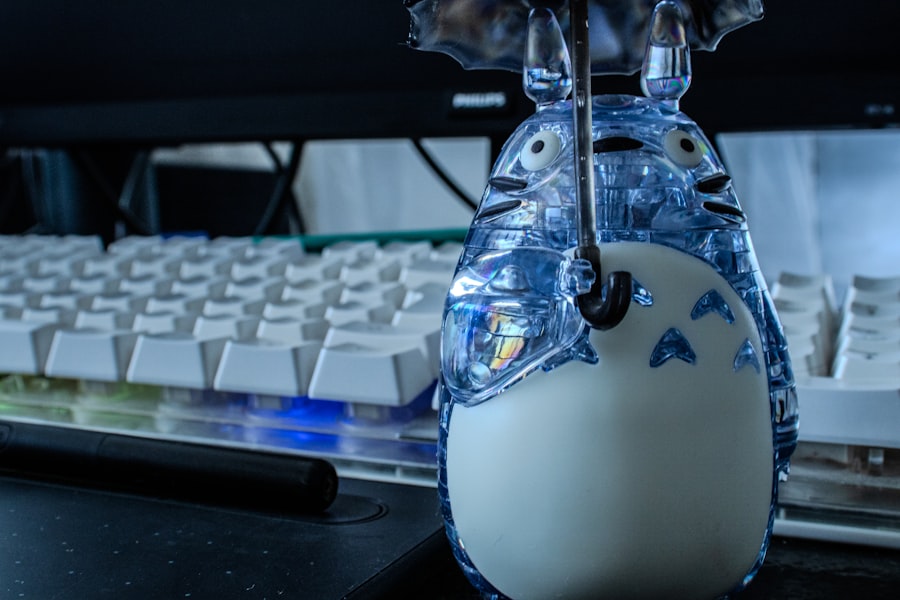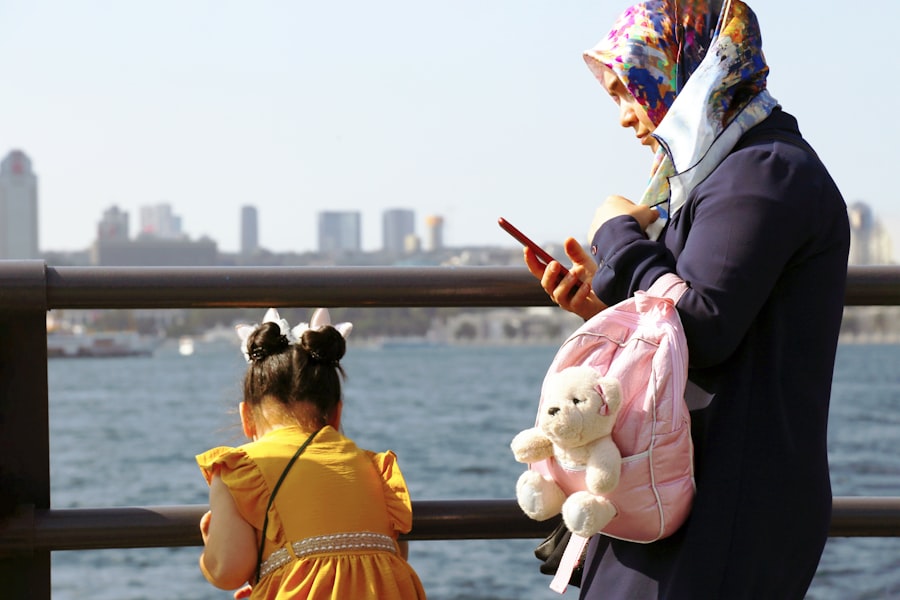Studio Ghibli, founded in 1985 by the visionary filmmakers Hayao Miyazaki and Isao Takahata, has become synonymous with high-quality animation and storytelling that transcends cultural boundaries. The studio emerged from the ashes of the Japanese animation industry, which was often characterized by commercialism and a lack of artistic integrity. Miyazaki and Takahata sought to create films that not only entertained but also resonated with audiences on a deeper emotional level.
Their first major success, “My Neighbor Totoro” (1988), introduced viewers to a world filled with wonder and magic, establishing a template for the studio’s future works. Over the years, Studio Ghibli has produced a remarkable array of films that have garnered critical acclaim and commercial success worldwide. Titles such as “Spirited Away” (2001), which won the Academy Award for Best Animated Feature, and “Princess Mononoke” (1997), which tackled complex themes of environmentalism and industrialization, have solidified the studio’s reputation as a powerhouse in the animation industry.
The meticulous craftsmanship, attention to detail, and rich storytelling found in Ghibli films have not only captivated audiences but have also influenced countless animators and filmmakers around the globe. The studio’s legacy is not merely one of artistic achievement; it is also a testament to the power of animation as a medium for profound storytelling.
Key Takeaways
- Studio Ghibli was founded in 1985 by Hayao Miyazaki and Isao Takahata, and has since become renowned for its captivating storytelling and stunning animation.
- The studio’s animation style is characterized by its hand-drawn, detailed artwork, and its ability to capture the beauty of nature and the human experience.
- Studio Ghibli films often explore themes of environmentalism, feminism, and the human condition, delivering powerful messages that resonate with audiences of all ages.
- The studio’s impact on popular culture is evident in the global success of its films, as well as the numerous awards and accolades they have received.
- Studio Ghibli’s films continue to captivate audiences around the world, with their timeless stories and universal themes that transcend cultural boundaries.
The Unique Animation Style of Studio Ghibli
The animation style of Studio Ghibli is characterized by its hand-drawn artistry, vibrant colors, and fluid motion, which together create a visually stunning experience. Unlike many contemporary animation studios that have shifted towards computer-generated imagery (CGI), Ghibli remains committed to traditional animation techniques. This dedication to hand-drawn animation allows for a level of detail and expressiveness that is often lost in digital formats.
Each frame is meticulously crafted, showcasing the studio’s commitment to artistry and craftsmanship. The lush landscapes, intricate character designs, and whimsical creatures that populate Ghibli films are a testament to the skill and passion of its animators. Moreover, Ghibli’s animation style is not just about aesthetics; it serves to enhance the storytelling.
The fluidity of movement in characters, particularly in scenes depicting flight or nature, evokes a sense of freedom and wonder that resonates deeply with viewers. For instance, in “Kiki’s Delivery Service” (1989), Kiki’s flying scenes are not merely visual spectacles; they encapsulate her journey of self-discovery and independence. The attention to detail extends beyond character animation to the environments as well.
The meticulous rendering of natural elements—such as wind rustling through trees or water rippling in a pond—immerses audiences in the film’s world, making it feel alive and tangible.
Themes and Messages in Studio Ghibli Films

The thematic depth of Studio Ghibli films is one of the hallmarks that sets them apart from mainstream animated features. At their core, Ghibli films often explore complex themes such as environmentalism, the innocence of childhood, the struggle for identity, and the duality of human nature. For instance, “Princess Mononoke” delves into the conflict between industrialization and nature, presenting characters that embody both sides of the struggle.
The film does not offer simple answers; instead, it encourages viewers to reflect on their relationship with the environment and the consequences of their actions. Another recurring theme in Ghibli films is the exploration of female empowerment and agency. Characters like Chihiro from “Spirited Away” and Sophie from “Howl’s Moving Castle” (2004) undergo significant transformations throughout their journeys.
They are not merely passive protagonists; rather, they actively confront challenges and grow stronger through their experiences. This focus on strong female characters resonates with audiences of all ages and backgrounds, challenging traditional gender roles often found in animated films. By presenting multifaceted female leads who navigate complex emotional landscapes, Studio Ghibli has redefined what it means to be a hero in animated storytelling.
Studio Ghibli’s Impact on Popular Culture
The influence of Studio Ghibli on popular culture is profound and far-reaching. The studio’s films have inspired a generation of artists, filmmakers, and storytellers across various mediums. Iconic characters like Totoro and No-Face have become cultural symbols, representing not only the magic of childhood but also the importance of environmental stewardship and compassion.
Merchandise featuring these beloved characters has permeated global markets, from plush toys to clothing lines, further embedding Ghibli’s legacy into everyday life. In addition to merchandise, Studio Ghibli’s impact can be seen in various forms of media, including video games, literature, and even theme parks. The studio’s aesthetic and storytelling techniques have influenced numerous video games that prioritize narrative depth alongside visual artistry.
Titles such as “Ni no Kuni,” which features character designs by Yoshiyuki Momose—a former Ghibli animator—exemplify this influence. Furthermore, the establishment of the Ghibli Museum in Mitaka, Japan, allows fans to immerse themselves in the enchanting worlds created by the studio while celebrating its artistic achievements. This cultural phenomenon underscores how deeply Ghibli has resonated with audiences worldwide.
The Enduring Appeal of Studio Ghibli Films
The enduring appeal of Studio Ghibli films can be attributed to their universal themes, relatable characters, and timeless storytelling techniques. Unlike many animated films that cater primarily to children with simplistic narratives, Ghibli films engage viewers of all ages by weaving intricate plots that resonate on multiple levels. The emotional depth found in films like “Grave of the Fireflies” (1988) or “The Wind Rises” (2013) speaks to human experiences such as loss, love, and resilience—elements that are universally understood regardless of cultural background.
Moreover, the enchanting soundtracks composed by Joe Hisaishi further enhance the emotional resonance of Ghibli films. Hisaishi’s scores are not merely background music; they are integral to the storytelling process, evoking feelings that words alone cannot convey. The combination of stunning visuals, compelling narratives, and evocative music creates an immersive experience that lingers long after the credits roll.
This unique blend ensures that Ghibli films remain relevant across generations, allowing new audiences to discover their magic while older fans revisit cherished memories.
Studio Ghibli’s Influence on Future Generations of Filmmakers

The impact of Studio Ghibli extends beyond its own productions; it has significantly influenced future generations of filmmakers both in Japan and around the world. Many contemporary animators cite Ghibli as a primary inspiration for their work due to its commitment to storytelling that prioritizes emotional depth over commercial viability. Filmmakers like Laika’s Travis Knight and Pixar’s Pete Docter have openly acknowledged how Ghibli’s artistry has shaped their creative processes.
The emphasis on character-driven narratives and rich world-building found in Ghibli films can be seen echoed in modern animated features that strive for similar emotional resonance. Furthermore, as global audiences increasingly embrace diverse storytelling styles, Studio Ghibli’s influence can be felt in the rise of international co-productions that blend different cultural perspectives. Films like “Wolfwalkers” (2020) from Cartoon Saloon showcase how traditional animation techniques can be combined with innovative storytelling inspired by Ghibli’s legacy.
As new technologies emerge and animation continues to evolve, the foundational principles established by Studio Ghibli—such as artistic integrity, emotional authenticity, and cultural respect—will undoubtedly guide future creators in their quest to tell meaningful stories through animation. In summary, Studio Ghibli stands as a monumental force in the world of animation, leaving an indelible mark on both popular culture and the art form itself. Its unique animation style, profound themes, and lasting influence on filmmakers ensure that its legacy will continue to inspire generations to come.
If you’re interested in learning more about the art of animation and storytelling, you may also enjoy reading Mastering Formatting and Styling with CSS: A Comprehensive Guide. This article delves into the technical aspects of web design and how CSS can be used to enhance the visual appeal of a website. Just like Studio Ghibli’s attention to detail and artistic vision, mastering CSS can help create captivating and visually stunning digital experiences.
FAQs
What is Studio Ghibli?
Studio Ghibli is a Japanese animation film studio known for its captivating and imaginative animated films. It was founded in 1985 by Hayao Miyazaki and Isao Takahata.
What makes Studio Ghibli films so special?
Studio Ghibli films are known for their beautiful animation, compelling storytelling, and strong themes of environmentalism, feminism, and pacifism. They often feature strong, independent female protagonists and explore complex emotions and relationships.
What are some popular Studio Ghibli films?
Some of the most popular Studio Ghibli films include “My Neighbor Totoro,” “Spirited Away,” “Princess Mononoke,” “Howl’s Moving Castle,” and “Kiki’s Delivery Service.”
Why do Studio Ghibli films captivate generations?
Studio Ghibli films have a universal appeal due to their timeless themes, stunning visuals, and emotionally resonant storytelling. They often explore the human experience in a way that transcends cultural and generational boundaries.
What is the impact of Studio Ghibli on the animation industry?
Studio Ghibli has had a significant impact on the animation industry, inspiring filmmakers and animators around the world with its unique storytelling and artistic style. The studio’s influence can be seen in the work of many contemporary animators and filmmakers.






















+ There are no comments
Add yours